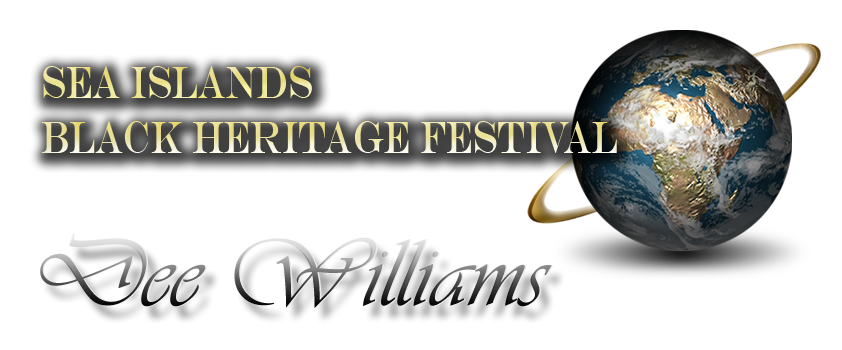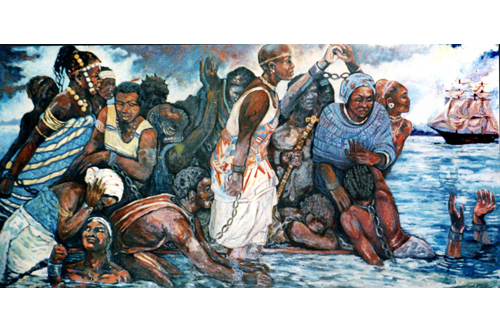
~~ Home ~~
ABOUT THE ARTIST - LaRue
LaRue, signature of artist, Dee Williams, is an award-winning artist working in all mediums of painting, illustration and instruction. Her work has been featured in Brunswick News, Milton 414, a children's poetry book and a New York based magazine Direct Art. Shows include Liturgical Art Guild of Ohio National Show; Townhouse Framers Exhibit Annual Show, Jekyll Island, Georgia; Ritz Theatre, Brunswick, Georgia. She is the recipient of the Mildred Huie Heritage Award for the painting of Ebo (Igbo) Landing.
LaRue is a narrative artist who uses different visual expressions to garner a reaction or response. LaRue believes that art is like music. A conductor will use different high notes and low notes to convey feelings, emotions, and different sounds to represent subject matter. A painter expresses the same with visual effects. Art conveys a story, a message.
Williams was educated in the Arts at Coastal Georgia Community College, Brunswick and the Coastal Center for the Arts, St. Simons Island, Georgia under the direction of Bill Hendrix, a distinguished artist in Chicago, Illinois, the High Museum, Atlanta, Georgia, as well as the Southeast. Hendrix helped launch LaRue's career in the Golden Isles.

IGBO LANDING
8'x4' oil
by LaRue
Igbo Landing is a historic moment in the southern past - horrors of slavery. The legend that remains is a reminder of a life and the tragedy of slavery's first freedom march. Igbo women and men were kidnapped from Southeastern Nigeria, located in West Africa, and brought by slave traders to Savannah, Georgia, to be sold as slaves. The men and women were stripped of their human-beingness, history and culture. The Coopers from St. Simons Island, and Thomas Spaulding from Sapelo, purchased the Igbo men and women and shipped them to St. Simons Island via the York.
The captain's enslaved person was the first to jump into the deep water and drown, which gave the precedence for the Igbo people. They began chanting "Orimiri Omambala bu anyi bia, Orimiri Omamnala ka amyi ga ejima" (The water sprit brought us and the water sprit will bring us home). Chained one to the other, they came into port and were lead to the land. But, instead of walking on the bank into a life of slavery, they all turned and walked into the depths of Dunbar Creek.
The painting is a symbolic reflection of the several African cultures and people who were affected in the old southern way of life. The symbols in art and crafts stems from African religion which was in every part of their lives. It can be seen as jewelry, the patterns of their clothes, cooking utensils, homes and religious ceremonies. This is incorporated in the painting as in the amber headdress worn by women in mourning at a death ceremony. The royal touraco red feather protects the Swazi from evil. Patterns in the chief's robe has a woven message inspired from Kente design called Aberewa Ben, "He is omnipotent." He carries a staff from the Messiah tribe bearing the hand and gold key, which means "God opens all doors." The snake tattoo biting its own tail is Aido-Wedo, the god which connects the heavens with the waters.
They say the Igbo tribe still haunts the landing and you can hear the chains and their chants. "The water sprit brought us and the water sprit will bring us home."
Igbo Landing can be seen at the Arthur J. Moore Methodist Museum, at Epworth by the Sea, St. Simons Island, Georgia.
Dee Williams
LaRue
williamsdiana61@yahoo.com
